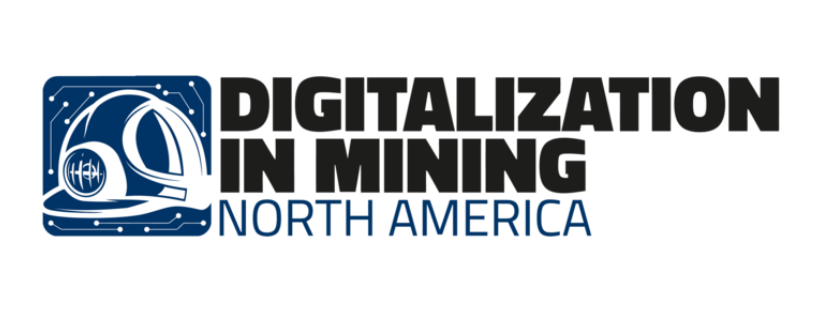Every fraction of gold you fail to capture shows up on the balance sheet. Traditional furnaces and electrolytic cells still let as much as 15% of precious metal slip into tailings, and a single unplanned outage can wipe out over $500,000 in daily gross margin for a mid-size refinery—money that vanishes the instant production stops.
Most facilities continue to lean on the Miller and Wohlwill processes. While proven, these methods were engineered for a slower, analog era. Batch assays, manual set-points, and energy-hungry chemistries force you to trade purity for throughput and accept higher reagent and fuel bills.
Industrial AI is rewriting the economics. By reading sensor data in real time, AI models automatically tune temperature, flux, and reagent dosage, and forecast failures before they escalate. Here are three concrete ways these capabilities can grow profits, cut costs, and lock in consistently higher-grade bullion at your refinery.
Gold Refining Process: 3 AI Revenue Boosters
Gold refineries face relentless pressure to maximize yield while minimizing costs. Every tenth of a percent in purity matters, and traditional processes leave too much value on the table. Modern industrial AI solutions are changing this equation by creating unprecedented control over temperature, reagent use, and maintenance cycles.
The following approaches represent proven paths to measurable profit enhancement, strategies already delivering substantial returns at facilities that have embraced closed-loop optimization technologies.
1. Close the Loop on Purity & Yield with Real-Time AI Control
Every fractional drop in doré purity erodes profit. Traditional quality checks rely on batch samples sent to the lab, so plant operators discover off-spec metal hours after a pour, well past the point where they can recover the lost value. AI optimization solutions change that equation by creating closed-loop controllers that monitor sensor readings, temperature, flux composition, and trace-metal levels at millisecond intervals.
This controller, a machine-learning model, interprets those data streams and instantly adjusts furnace temperature, flux ratios, or residence time to keep the melt on target. Unlike traditional advanced process control solutions, an AI Optimization (AIO) approach continually learns from every pour, allowing corrective actions to become sharper over time.
Real-time control also attacks the industry’s largest hidden loss: precious metal trapped in slag. Studies of legacy refining lines show tailings that still contain significant gold because operators must choose between running hot for throughput or cool for purity. With dynamic set-points, that trade-off softens. Refineries using similar closed-loop logic routinely claw back one to three percentage points of metal that would otherwise be discarded—a recovery that can translate into seven-figure annual gains at even mid-scale operations.
Modern optimization platforms expose every move the model wants to make, along with the constraint it is solving for—purity, throughput, or both. Operators stay in the loop: they can approve, override, or fine-tune recommendations until confidence grows. Integration is straightforward; the optimizer writes set-points to the same distributed control system tags already used by your existing advanced controls.
Think about yesterday’s pour: if purity came in 0.1% below spec, how much revenue slipped away? Run that number through your own economics, then ask what a 1% swing in yield would mean for your bottom line.
2. Slash Energy & Reagent Costs via Autonomous Optimization
Fuel, electricity, and chemicals represent some of the largest cash outflows in the gold refining balance sheet, right alongside labor and depreciation. When prices swing, margins compress fast.
Reinforcement learning (RL) controllers relieve that pressure by continuously experimenting within safe operating boundaries. The algorithm discovers the lowest fuel rate or reagent charge that still meets purity targets for the current ore feed. If the incoming bullion shifts from high-silver to high-copper, the model simply pivots in minutes, avoiding the hours or days humans typically need to retune a furnace recipe.
Energy savings compound quickly. Case in point: Monroe Energy cut fuel bills and boosted margin after adopting similar optimization technology on its processing units. A recent deployment on a renewable diesel unit used closed-loop models to shave 12% off hydrogen consumption—proof that the same approach works across process industries.
Reagents tell a similar story: tighter pH and redox control can shave kilograms of cyanide or acid per troy ounce, easing both variable cost and environmental load.
Operators gain breathing room by consulting dashboards that surface the model’s next best move—creating a “24/7 mentor” effect that accelerates upskilling of new hires. Track success with a concise KPI stack: MMBtu per ounce, kilograms of reagent per ounce, and CO₂ equivalent per ounce refined. Hitting those numbers not only improves profitability but also positions the plant for stricter emissions or water-use regulations.
3. Predict, Detect & Eliminate Unplanned Losses Before They Happen
Nothing drains a gold refinery like an unplanned shutdown. A single slag overflow, crucible crack, or leach-tank outage can idle the entire line and vaporize substantial gross margin every day the melt is cold. While reactive maintenance waits for alarms, AI technology spots the early tremors.
The approach starts with dense sensor grids feeding vibration, acoustic, and thermal signatures into anomaly-detection models trained on years of historical runs. When a bearing’s frequency spectrum drifts or a furnace wall shows localized hot spots, the system flags the deviation hours—or days—before failure occurs.
Loss prevention goes further through high-frequency analytics that measure real-time metal balance across in-process streams. If assay drift suggests gold is bleeding into tailings, a dashboard lights up and automatically recalculates the financial exposure. Maintenance planners can then schedule a controlled intervention during low-demand windows, while process engineers adjust parameters to halt the leak immediately.
Sustaining that value requires vigilance. Leading plants appoint cross-functional sustainment teams to retrain models when feed chemistry drifts or new equipment comes online. Integration challenges—data silos, historian gaps, latency—still surface, but they are solvable with phased rollouts and clear six-month proof-of-value checkpoints.
Ask yourself: how many hours of downtime did your facility absorb last quarter, and what did every idle hour really cost? A model that alerts you three hours sooner than the last incident paid for itself the moment the outage never happened.
Smarter Gold Refining for Higher Yields and Lower Costs
AI Optimization is reshaping gold refining by delivering measurable gains in yield, energy efficiency, and process stability—without disrupting existing operations. Whether you’re aiming for a 2% increase in recovery or a 20% cut in fuel consumption, Closed Loop AI Optimization (AIO) can turn that potential into bottom-line impact within months, not years.
By reducing unplanned losses, improving purity, and eliminating variability, AI empowers your team to make better decisions, faster—while preserving institutional knowledge and driving continuous improvement across your gold refinery.
For gold refiners ready to explore what’s possible, Imubit offers an assessment designed specifically for your plant.
Using your historical data, we model potential improvements in dollars-per-ounce, identify process gaps, and deliver a clear ROI forecast—without requiring hardware upgrades or interrupting frontline operations.




